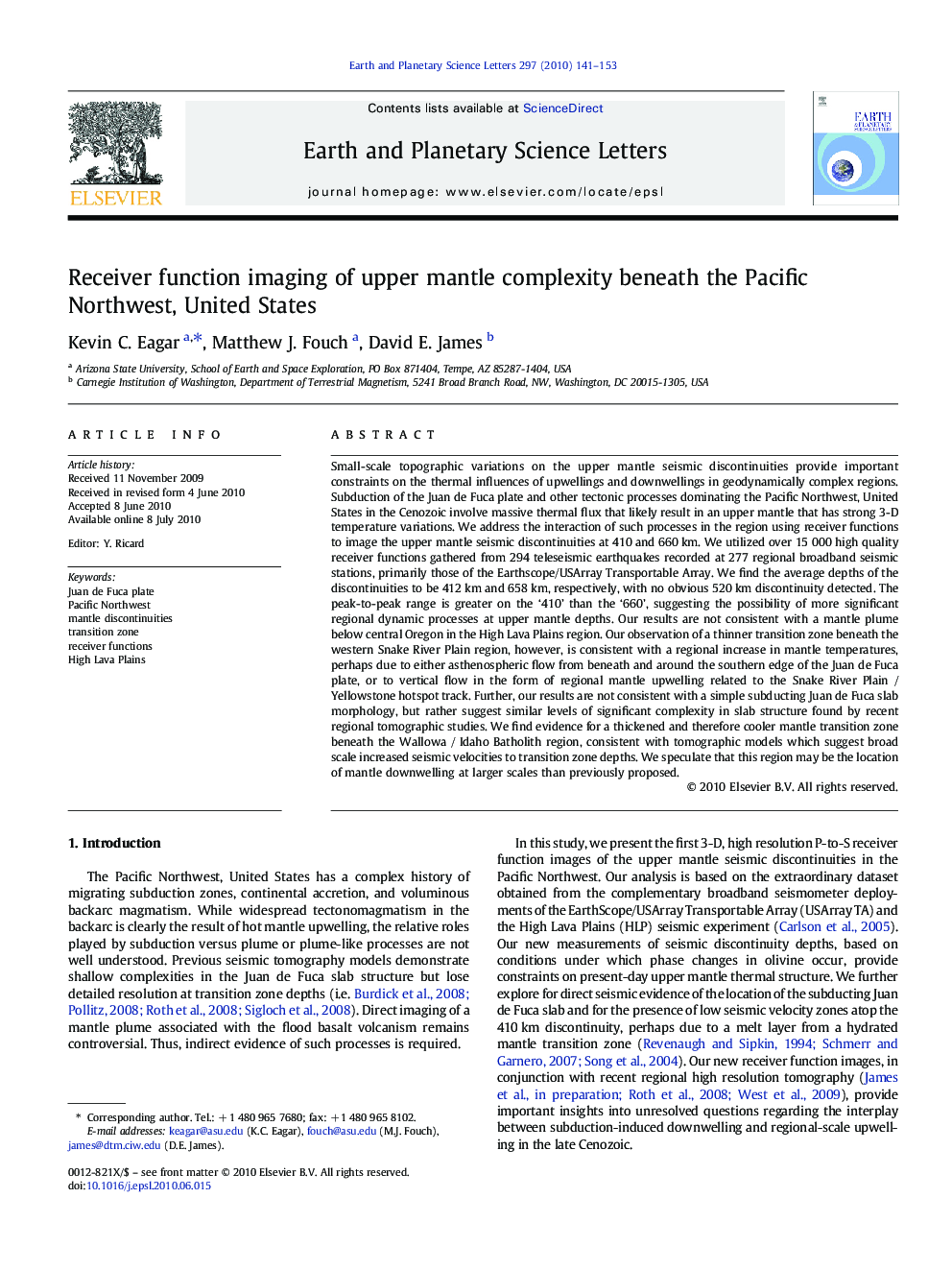| Article ID | Journal | Published Year | Pages | File Type |
|---|---|---|---|---|
| 4678340 | Earth and Planetary Science Letters | 2010 | 13 Pages |
Small-scale topographic variations on the upper mantle seismic discontinuities provide important constraints on the thermal influences of upwellings and downwellings in geodynamically complex regions. Subduction of the Juan de Fuca plate and other tectonic processes dominating the Pacific Northwest, United States in the Cenozoic involve massive thermal flux that likely result in an upper mantle that has strong 3-D temperature variations. We address the interaction of such processes in the region using receiver functions to image the upper mantle seismic discontinuities at 410 and 660 km. We utilized over 15 000 high quality receiver functions gathered from 294 teleseismic earthquakes recorded at 277 regional broadband seismic stations, primarily those of the Earthscope/USArray Transportable Array. We find the average depths of the discontinuities to be 412 km and 658 km, respectively, with no obvious 520 km discontinuity detected. The peak-to-peak range is greater on the ‘410’ than the ‘660’, suggesting the possibility of more significant regional dynamic processes at upper mantle depths. Our results are not consistent with a mantle plume below central Oregon in the High Lava Plains region. Our observation of a thinner transition zone beneath the western Snake River Plain region, however, is consistent with a regional increase in mantle temperatures, perhaps due to either asthenospheric flow from beneath and around the southern edge of the Juan de Fuca plate, or to vertical flow in the form of regional mantle upwelling related to the Snake River Plain / Yellowstone hotspot track. Further, our results are not consistent with a simple subducting Juan de Fuca slab morphology, but rather suggest similar levels of significant complexity in slab structure found by recent regional tomographic studies. We find evidence for a thickened and therefore cooler mantle transition zone beneath the Wallowa / Idaho Batholith region, consistent with tomographic models which suggest broad scale increased seismic velocities to transition zone depths. We speculate that this region may be the location of mantle downwelling at larger scales than previously proposed.
